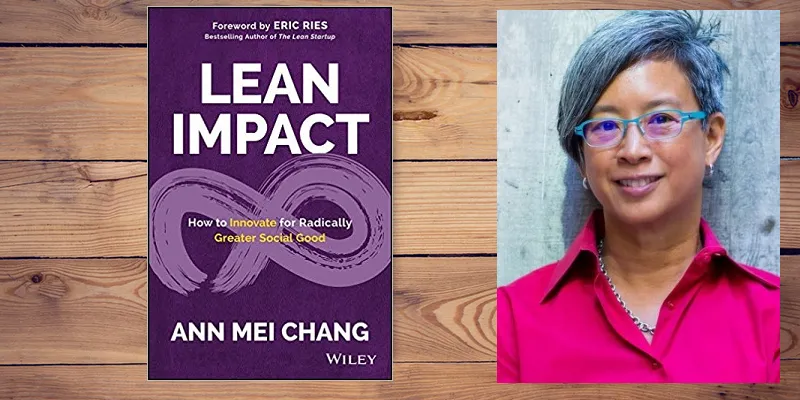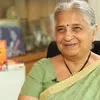Don’t be content with making only a small impact; aim for maximum scale: Ann Mei Chang, author, ‘Lean Impact’
This innovation practitioner joins us for an interview on current challenges in the social innovation sector, how lean startup approaches can help, and why scale matters so much for social enterprises in a world full of hard problems.
Ann Mei Chang is author of Lean Impact: How to Innovate for Radically Greater Social Good (see my book review here). She spent more than 20 years at Google, Apple, and Intuit, and also was Chief Innovation Officer at USAID, Executive Director of the US Global Development Lab, and Chief Innovation Officer at Mercy Corps.
Ann joins us in this chat on the challenges in social innovation, insights derived from applying the lean startup approach, metrics for social impact, emerging models of funding, and scale strategies for social enterprises.
Edited excerpts below:
YourStory: What makes social innovation particularly difficult?
Ann Mei Chang: Social innovation can help solve the tough problems of the world if we set more audacious goals, embrace risk-taking, and iterate through fast experiments that drive learning. The problem with the traditional top-down “grand master plan” is that there are so many things that might go wrong. Any one of them could cause the whole endeavor to fail and waste the enormous amount of time and resources that was invested.
A big challenge for social innovators is the nature of funding. Rather than invest in the potential for future growth, most donors care about tangible, predictable results. Thus, non-profits are forced to operate more like utility companies than startups. This makes it hard for them to experiment, take risks, and pivot – all essential elements of innovation.
In addition, there are a number of innate challenges in the types of problems we tackle. Measuring impact is much harder than measuring e-commerce purchases, our instincts can lead us astray when serving people very different from ourselves, and experimenting with vulnerable people requires great care.

YS: How was your book received?
AMC: People who have been on this path are excited to have a vocabulary and framework for what innovation for good looks like. I've seen the light-bulb go off for so many people for whom innovation seemed to foreign or unachievable in the context in which they work.
YS: What kinds of insights does the lean-startup process offer social innovators?
AMC: Experiments help us test our assumptions and reduce risk each step of the way. Sometimes we might learn that we are solving the wrong problem – one social entrepreneur who wanted to protect the habitat of orangutans discovered the biggest driver for deforestation was the lack of affordable healthcare.
Other times we might discover that people’s priorities not what we thought – the nonprofit path found that low-income families in Cambodia overwhelmingly chose a nicer and more expensive design for a water filter as they were embarrassed to have something that looked like a garbage pail in the middle of their home.
YS: What are some of the issues in applying business-oriented mindsets to social good initiatives?
AMC: Many social entrepreneurs have told me they made a deliberate choice to charge a least a nominal fee for their products and services so they will receive a clear signal of whether they are meeting their customer needs.
But this is not just about revenues or profits. A more apt comparison would be to the scientific method, which is all about rigorously testing hypotheses. It turns out that, because of the pressure to make profits, businesses have had to adopt a more efficient way of building better products and services.
By turning that same pressure to purpose rather than profits, Lean Impact is merely trying to help organisations find the best path to maximise social impact.
YS: What some misconceptions of what ‘innovation’ really means?
AMC: The problem is that people have conflated two distinct concepts: invention and innovation. I think Thomas Edison’s quote “Genius is 1 percent inspiration and 99 percent perspiration” puts this in perspective. The big idea, or invention, is that 1 percent. It is essential, but not sufficient for change and impact.
On the other hand, innovation is the blood, sweat, and tears that goes into taking that germ of an idea and testing, iterating, and improving it to make a difference in the real world. In other words, innovation is the path, but impact is the destination.
YS: What kinds of metrics should social innovators be focusing on?
AMC: Social innovators should go beyond vanity metrics such as the number of people reached or lives changed. More meaningful impact focuses on the positive difference made in their lives.
We should improve on unit metrics such as the adoption rate, conversion rate, success rate, or cost per intervention. When we improve these numbers, we can be confident we are delivering greater bang for buck.
YS: How do frameworks for social innovation at scale, like Lean Impact, build on motivations such as altruism?
AMC: Generosity is a beautiful human quality, but it’s not sufficient in itself. We also need to focus on effectiveness. The unfortunate reality is that a lot of the time and money we donate makes us feel like we are doing good, but doesn’t necessarily make a lasting difference.
Generosity must be paired with another virtue, humility. This means switching our focus from how much we give to whether we are making a lasting impact. We also need to focus on delivering significant impact, and not only for a tiny fraction of those in need.
Scale should not end up being an afterthought. If a solution works, but is too expensive to scale, it may need to be entirely redesigned and retested. Thus, Lean Impact encourages us to test our growth hypotheses early on, along with value and impact.
Common paths to scale could involve cross subsidy, open source/replication, voluntary donations, government adoption, and policy change. Whatever your engine for growth, the important thing is to test the assumptions behind your model early.
YS: What are some challenges in focusing on the core problem, and not just solutions?
AMC: There’s a tendency in mission-driven work to become overly attached to our solutions. After all, this is what we pitch to funders and live and breathe every day, so it is understandable that our solution can become part of our identity.
As a result, it is easy to focus on promoting, refining, and implementing our solution, lose sight of the problem we are trying to tackle, and fail to realise when a different approach might be called for.
YS: How can the funding model be changed for social innovation?
AMC: An evidence-based tiered funding mechanism based on venture capital allows us to place lots of smaller, riskier bets to find game-changing innovations. Prizes, advanced market commitments, and other forms of outcomes-based funding are also valuable tools to incentivise the development of options that deliver greater bang for the buck.
I also see blended financing – where philanthropic and investment capital are combined – as a promising way to leverage charitable dollars to catalyse larger pools of private capital into impact-driven enterprises.
YS: What trends and developments do you see in financing structures and regulations for social innovation?
AMC: I found that many of the most exciting developments are coming from hybrid enterprises, which are seeking both impact and a business model. Building better financing and legal structures that make it easier to operate between the extremes of pure non-profit and a for-profit with market-rate returns can unleash huge new opportunities.
YS: What are the success factors for government, academia, corporates and civil society to work together to boost social entrepreneurship in their countries?
AMC: Transformative impact inevitably happens at the intersection of sectors. We need more people and institutions who can work across and between each of these sectors.
YS: Q: What is your parting message to the startups and aspiring social entrepreneurs in our audience?
AMC: Don't be satisfied with doing “some” good. Stay relentlessly focused on “maximising” the social impact and scale of what you deliver.









